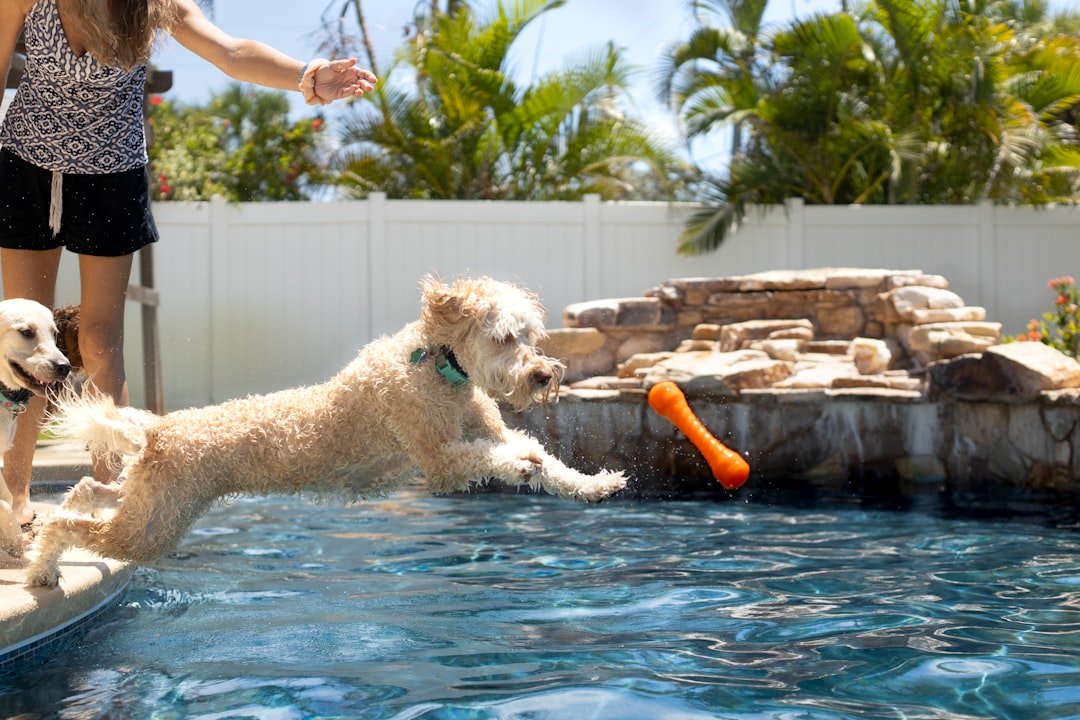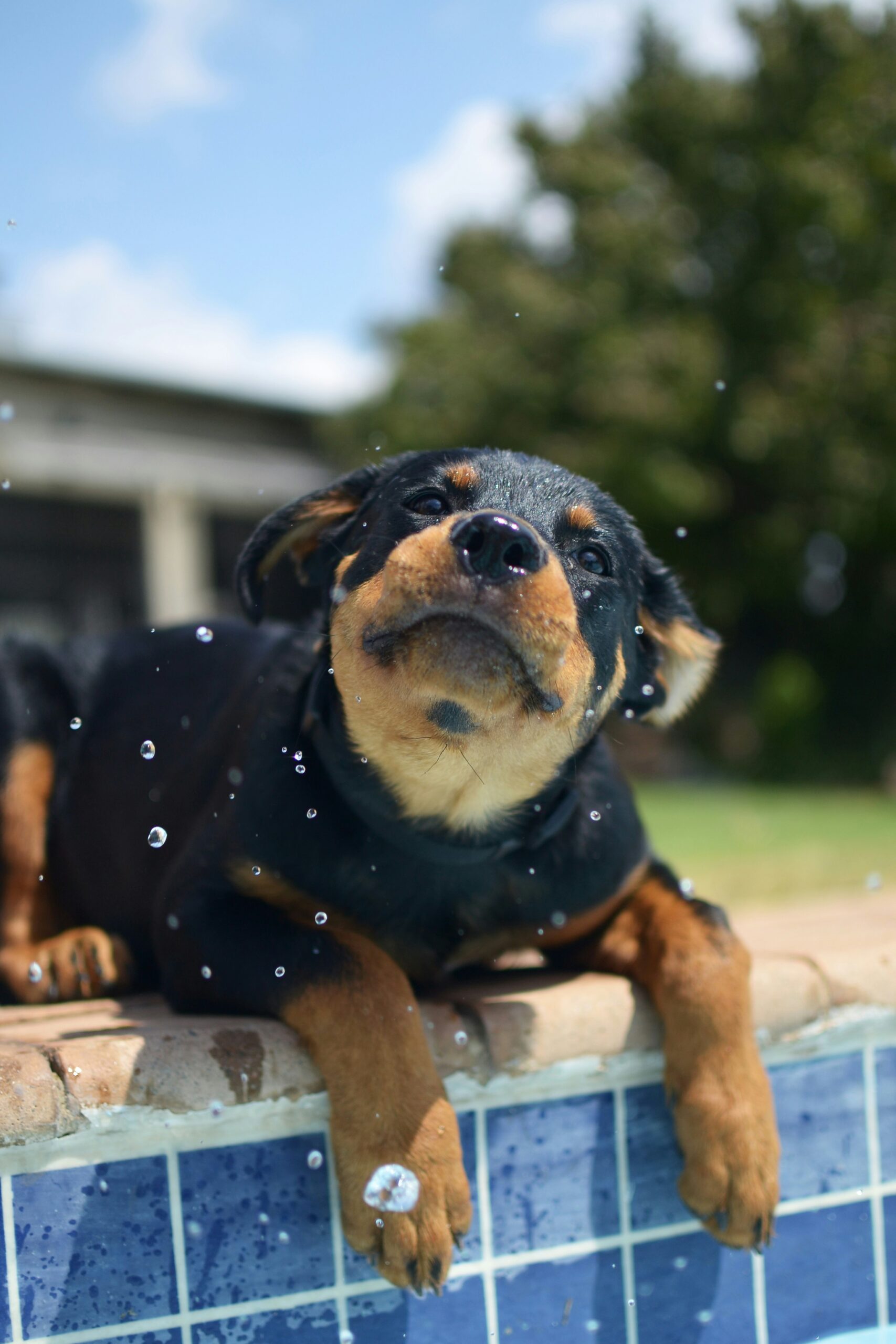Swimming Safely: A Guide to Keeping Your Dog Safe in the Water
Swimming Safety Tips for Dogs: Learn how to introduce your dog to water, the importance of water safety, and tips for teaching dogs to swim safely to prevent water-related health issues and accidents.
Introduction to Swimming Safety for Dogs
Introducing your dog to water safely for swimming is a process that requires patience and positive reinforcement techniques. One effective way to do this is by using toys or treats to encourage your dog to enter shallow water gradually. For example, you can start by tossing a toy near the water’s edge and rewarding your dog for approaching it without entering the water. This method helps build positive associations with water and can make the swimming experience more enjoyable for your furry friend.
Moreover, obedience training is not only crucial for teaching dogs basic commands but also for water safety. For instance, commands like “come,” “stay,” and “leave it” can be lifesaving when near bodies of water. By training your dog to respond to these cues, you can prevent them from venturing into deep or dangerous waters unsupervised. Consistent training and positive reinforcement can help reinforce these behaviors and keep your dog safe during swimming activities.
Additionally, knowing your dog’s breed characteristics and their natural affinity or aversion to water is essential for their safety. Breeds like Labrador Retrievers are known for their strong swimming abilities, while brachycephalic breeds like Bulldogs may struggle in the water due to their anatomy. Understanding these breed-specific traits can help you tailor your approach to water activities and ensure a safe and enjoyable experience for your canine companion. By considering your dog’s breed tendencies, you can make informed decisions regarding their interaction with water and minimize any potential risks.
 Importance of Water Safety for Dogs
Importance of Water Safety for Dogs
Ensuring the safety of dogs around water is paramount, especially considering the alarming statistic that over 5,000 dogs tragically drown in pools every year. This highlights the pressing need for pet owners to be vigilant and proactive in implementing water safety protocols. By closely supervising dogs during water activities and considering their breed characteristics, such as their swimming abilities and predisposition to certain risks, pet owners can significantly reduce the likelihood of water-related accidents. For instance, brachycephalic breeds, like Bulldogs and Pugs, are at a higher risk due to their short snouts and respiratory issues, making it crucial to take extra precautions when they are near water.
Moreover, the significance of life jackets for dogs cannot be overstated, especially for breeds that may struggle to float or swim in deep water. Investing in a well-fitted dog life vest can provide an added layer of protection and buoyancy, giving pet owners peace of mind during water activities. Additionally, ensuring that dogs have access to fresh drinking water while engaging in water play is vital for preventing dehydration and other health complications. By incorporating these safety measures and being informed about breed-specific risks, pet owners can create a safer environment for their canine companions around water bodies, promoting a harmonious and worry-free swimming experience for both pets and owners alike.
Tips for Teaching Dogs to Swim Safely
Teaching a dog to swim safely requires patience and a gradual introduction to the water. A good tip is to start in a calm and shallow area to build your dog’s confidence and avoid overwhelming them. For example, you can use treats and toys to encourage your dog to enter the water slowly, ensuring they associate swimming with positive experiences.
It is essential to show your dog how to exit the water easily, especially from a pool, to prevent exhaustion or panic [1, 5]. For instance, you can guide your dog towards the steps or provide a ramp for them to climb out comfortably. This simple step can significantly reduce the risk of accidents and help your dog feel more at ease in the water. Additionally, always keep an eye on puppies around water, as their lack of experience and smaller size may put them in more vulnerable situations. By closely supervising them, you can intervene if needed and create a safe environment for them to learn how to swim confidently.
Preventing Water-related Health Issues
Fresh water intoxication can lead to serious health issues in dogs, including brain swelling and seizures, emphasizing the importance of monitoring their water intake during swimming activities. Consuming excessive saltwater can result in muscle tremors and seizures in dogs, highlighting the need to prevent dogs from ingesting saltwater.
It is essential to take precautions to prevent pool-related health issues, as pool chemicals like pool shock can irritate a dog’s skin and respiratory tissues, underscoring the importance of rinsing off dogs after swimming to remove any harmful residues. For dogs swimming in lakes or rivers, toxic algae in water bodies pose a risk of liver necrosis and neurotoxicity, making it crucial to prevent dogs from ingesting water from contaminated sources.
By being vigilant and proactive in managing the water sources that dogs come into contact with, pet owners can significantly reduce the risks of water-related health issues in their furry companions.
Recommending Essential Swimming Gear for Dogs
When it comes to ensuring the safety of your furry friend during water activities, investing in a dog life vest is a crucial step. This safety gear is particularly important for deep water adventures and breeds that may find it challenging to stay afloat. For example, breeds like Bulldogs or Pugs, which are not natural swimmers, can benefit greatly from wearing a life vest to provide them with the necessary buoyancy and support in the water.
Moreover, considering enrolling in a dog CPR class can equip you with the knowledge and skills needed to handle emergencies effectively while your dog is swimming. Knowing how to perform CPR on a dog can be life-saving in critical situations, providing you with the confidence to act swiftly and appropriately if an incident occurs in the water [1, 5]. Additionally, ensuring that your dog has access to fresh drinking water during water activities is essential for their well-being and hydration. Just like humans, dogs can become dehydrated, especially when engaging in physical activities like swimming, making it vital to offer them regular opportunities to drink water and stay hydrated.
After your dog has enjoyed a refreshing swim, taking the time to rinse off and dry their coat is essential for maintaining their skin health and overall comfort. Rinsing helps remove any chlorine, salt, or other chemicals present in the water that could potentially irritate your dog’s skin. Drying your dog thoroughly, especially in their ears, can also prevent issues like infections that may arise from trapped moisture. By incorporating these practices into your post-swimming routine, you can ensure that your canine companion stays healthy and happy after their aquatic adventures.
Conclusion: Ensuring Dogs’ Safety in Water Activities
Swimming can provide dogs with mental and physical stimulation, making it a rewarding activity for many furry companions. However, to make sure that dogs enjoy the water safely, pet owners must be vigilant about potential risks and take necessary precautions. For instance, recognizing the signs of water intoxication, such as lethargy, bloating, and vomiting, is vital in preventing a potentially life-threatening condition in dogs. By being aware of these symptoms, dog owners can quickly respond and seek veterinary care if needed, safeguarding their pet’s well-being during water activities.
Moreover, it is essential never to force a dog into the water, as this can lead to fear and anxiety, negatively impacting the dog’s association with swimming. Instead, introducing dogs to water gradually in a calm and shallow environment can help them build confidence and learn to swim safely. Additionally, investing in a dog life vest is a proactive measure that can offer extra support, especially for breeds that may struggle to float or are new to swimming. This gear can provide peace of mind for owners and enhance the safety of their canine companions in the water.
In conclusion, ensuring dogs’ safety during water activities requires a combination of knowledge, preparedness, and responsible pet ownership. By understanding the risks associated with swimming, recognizing the importance of proper introduction to water, and investing in safety gear like life jackets, pet owners can create a secure environment for their dogs to enjoy aquatic adventures while minimizing potential dangers. Remember, a safe and supervised swimming experience not only promotes physical health but also strengthens the bond between dogs and their owners in a fun and engaging way.




 Book Appointment
Book Appointment